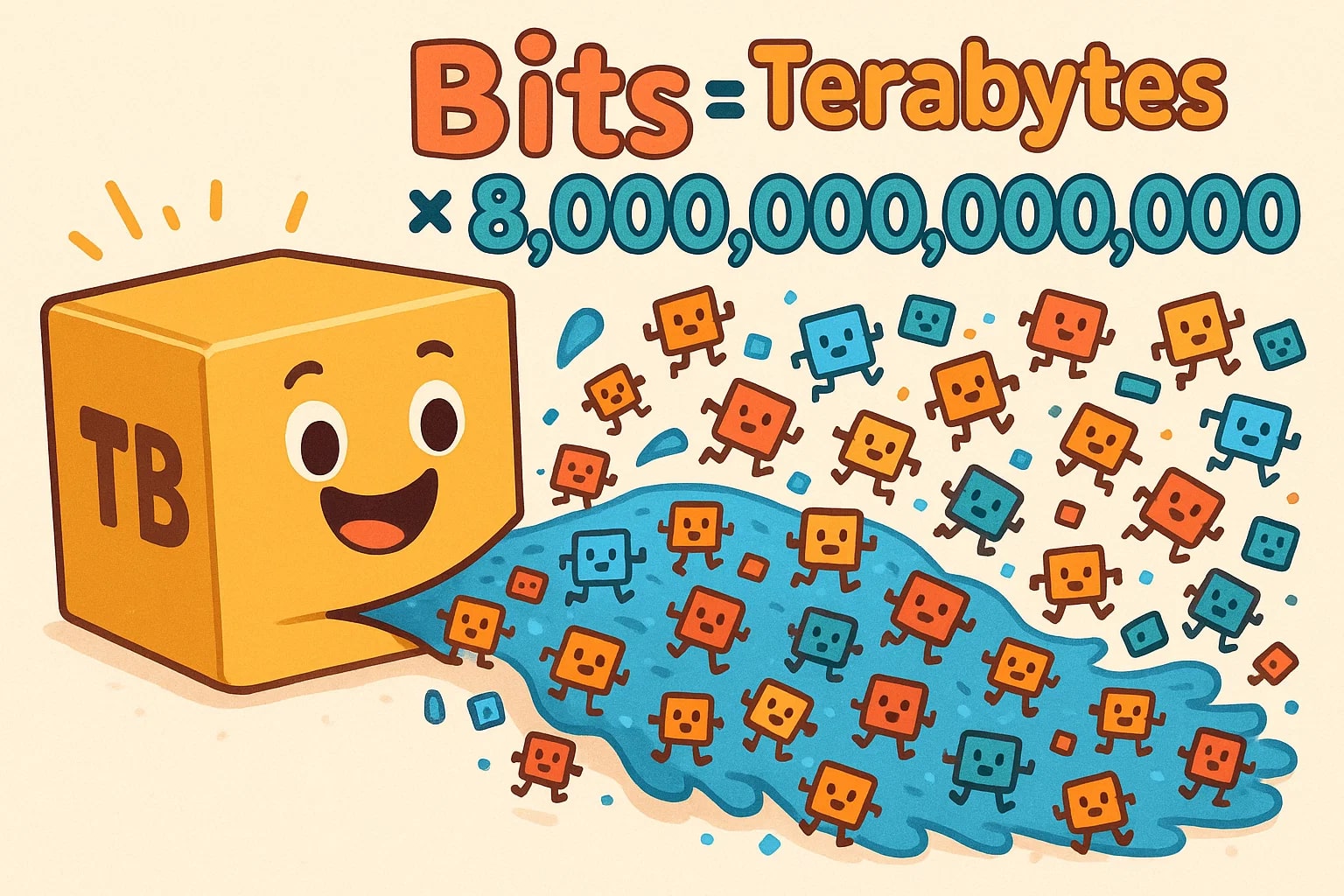terabyte to bit – How to convert TB to bit
When talking about massive file sizes or system backups, terabytes are the go-to unit. But when you're working with transmission rates, encryption systems, or calculating total raw data, you’ll often need the number in bits — the smallest unit of digital information. To go from stored data to transmitted data, converting terabytes (TB) to bits gives you a precise breakdown.
Here’s the straightforward way to make the conversion, and where it matters in real applications.

What is a terabyte (TB)?
A terabyte is a unit of digital storage equal to 1,000,000,000,000 bytes, or 1 trillion bytes. It’s most commonly used to measure:
-
Hard drive and SSD capacity
-
Cloud storage usage
-
Database size
-
Backup volumes and disk images
You’ll find terabytes in everyday contexts — from laptop specs to video editing workstations and enterprise servers.
What is a bit (b)?
A bit is the smallest unit of digital data. It represents a binary value of either 0 or 1. All digital systems — from files and media to memory and transmission — are built from bits.
Every other digital unit, including bytes, kilobytes, and terabytes, is derived by grouping bits into larger structures.
How to convert terabyte to bit
We use two key facts:
1 byte = 8 bits
1 terabyte = 1,000,000,000,000 bytes
So:
1 terabyte = 1,000,000,000,000 × 8 = 8,000,000,000,000 bits
This gives the formula:
bits = terabytes × 8,000,000,000,000
You’ve stored 3.5 terabytes of security footage. In bits, that’s:
3.5 × 8,000,000,000,000 = 28,000,000,000,000 bits
A backup server handles 0.75 TB of critical data per day:
0.75 × 8,000,000,000,000 = 6,000,000,000,000 bits
Transmitting 1.2 terabytes over a fiber line?
1.2 × 8,000,000,000,000 = 9,600,000,000,000 bits
You can speed up these conversions using the Data Storage Converter or browse similar tools in our full Conversion tools.
Did you know?
-
A single terabyte can hold over 250,000 high-res photos or 500 hours of HD video — totaling 8 trillion bits of information.
-
High-performance fiber-optic internet can transfer over 1 terabyte per hour, depending on speed and infrastructure.
-
Modern AI training datasets can reach tens of terabytes — requiring real-time processing of hundreds of trillions of bits.
-
Security camera systems often record 1–5 TB per week — that’s 8–40 trillion bits of surveillance footage.
-
In satellite communications, converting TB to bits helps optimize transmission windows and schedule bandwidth allocation precisely.
How data moves from stored to streamed
In modern tech, data is rarely static. A terabyte of stored video might be compressed, transmitted, decoded, and replayed — all involving bit-level calculations. For example, Netflix or YouTube might start with a terabyte master file, but each user's stream is delivered in smaller chunks measured in megabits per second.
At the infrastructure level, companies like AWS, Google Cloud, and Microsoft Azure handle petabytes daily — and at those scales, converting terabytes to bits becomes critical for tracking usage, planning network loads, and balancing performance.
Even smaller systems — like backup software or cloud sync apps — use bit-level accounting behind the scenes to measure and verify data integrity.

Multiply by 8 trillion — and you're done
The conversion is simple:
bits = terabytes × 8,000,000,000,000
It’s a one-step calculation that unlocks a much deeper understanding of how stored data translates to what actually moves through cables, servers, and systems.
Need to convert more digital units? Try the Data Storage Converter or explore the full lineup of Conversion tools to make any number clear.

